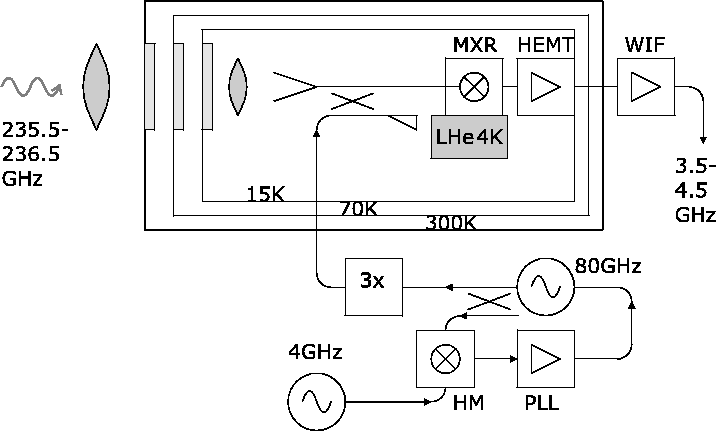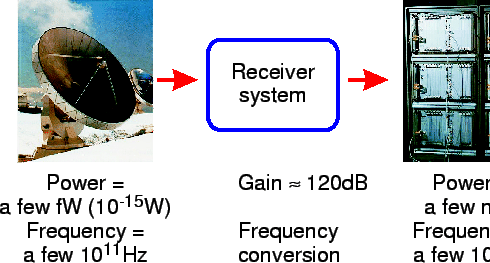



Next: 5.2 Coupling optics
Up: 5. Receivers : an
Previous: 5. Receivers : an
Contents
The purpose of a receiver is to collect
efficiently the astronomical signal that has been concentrated by
the antenna near its focal point, and to amplify it with a minimum
of extra noise to a level suitable for further processing by the
spectrometers or continuum detectors. This is illustrated by
figure 5.1.
Figure 5.1:
Orders of magnitude for frequencies and power levels
delivered by the antenna to the receiver, and by the receiver to
the spectrometer. The main roles of the receiver are to
down-convert the signal frequency to a range suitable for
analysis, and to amplify it while adding as little noise as
possible.
|
|
Figure 5.2 shows the main subsystems of a
receiver, that we will discuss below.
Figure 5.2:
Synoptic diagram of a typical receiver. This diagram is
grossly simplified; for instance, the optics involves mirrors,
elliptical and planar, and also grids; the LO/PLL system is
actually more complicated than shown.
 |




Next: 5.2 Coupling optics
Up: 5. Receivers : an
Previous: 5. Receivers : an
Contents
Anne Dutrey


